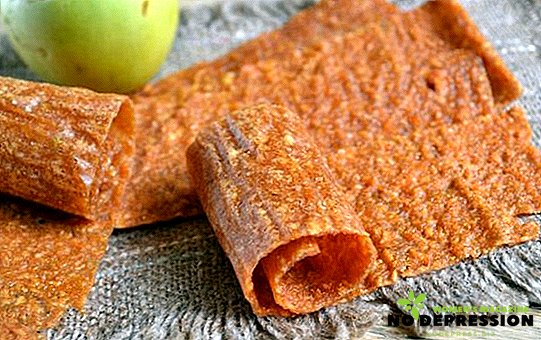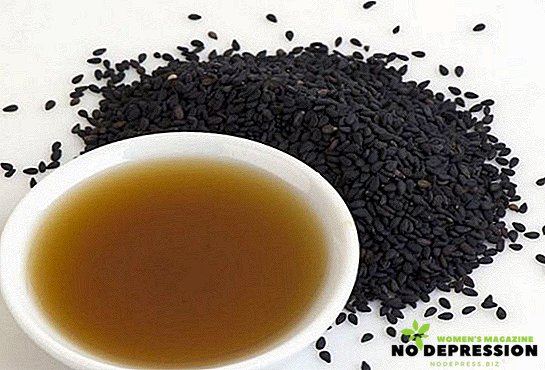Ficus is considered a symbol of a strong family and home comfort, therefore it is very popular. In addition, these beautiful flowers are able to clean the air of harmful substances, and increase the oxygen content in the room.
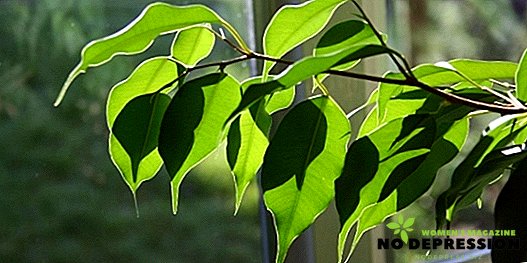
Types of ficus benjamina
Evergreen perennial plant of the genus of mulberry family of ficuses - Benjamin Ficus. It is characterized by an abundance of species, a variety of color shades. Its most popular types are:
- Miniature ficus Natasha. Dwarf species, which in nature can reach more than 10 m, but at home the height does not exceed 40 cm. The trunk of the ficus is characterized by flexibility and subtlety, which makes it possible to twist the plant, giving it a spectacular look. The flower is decorated with shiny leaves in the shape of an oval. The color is varied: from rich green to light green with white spots and veins;
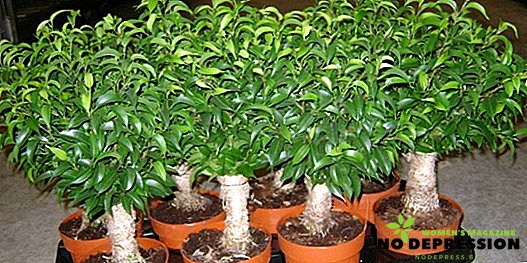
- Compact Kinki. It is a dwarf variety. Motley foliage with the presence of edging salad or cream shade attracts attention. It is a popular indoor flower due to its compact size and decorative appearance;
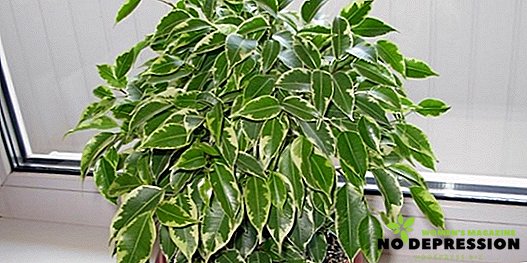
- Elegant Daniel. In appearance, the ficus looks like a small tree, with medium-sized leaves, painted in a saturated green color. The shape of the leaf plate is elongated with a pointed end. Young flexible shoots allow us to weave various figures from them by interlacing them in the form of a spiral, spit, or circular grid;
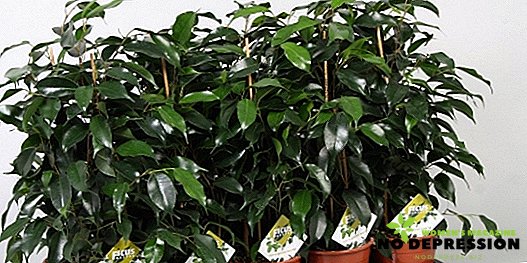
- Original Barok. The plant belongs to low-growing varieties, in which there is a slow growth. Developing, it forms short internodes. Barok has thin stems and solid leaves with straight edges, characterized by richness. The sheet plate is bent along the middle vein, and has similarity with small ringlets;
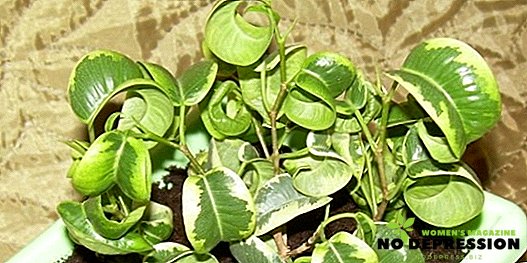
- Spectacular Starlight. It is a decorative deciduous tree-shaped culture, capable of reaching up to 5 m in height and up to 3 m in width. The oval shape of the leaves has a cream or white edging with a dark middle and light cream center vein. This variety has a very interesting and peculiar color, which distinguishes it from other species, for this reason it is of great interest among gardeners.
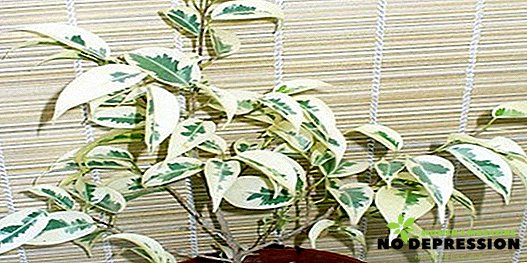
The organization of care at home
The secret to the success of caring for Benjamin Ficus is to create optimal environmental conditions similar to its natural. For this you need to familiarize yourself with all the main points in the care of ficus.
Proper lighting
A sufficient amount of sunlight is important in the intensity of growth and development of ficus. Therefore, it is required to provide the flower with proper lighting.
In the summer, flowers prefer to be near the windows of the south-western, eastern and even western directions.
 In winter, when the duration of the daytime decreases, you should additionally arrange lighting with lamps. This modern energy-saving solution will help provide the culture with the light it needs.
In winter, when the duration of the daytime decreases, you should additionally arrange lighting with lamps. This modern energy-saving solution will help provide the culture with the light it needs.
At the same time, it is necessary to keep a balance, since excessive sunlight can cause burns and yellowing of the foliage, and the lack of - will lead to the loss of decorativeness of the flower and slowing its growth.
It must be borne in mind that frequent changes in the location of a flower can have a bad effect on its development and will lead to dropping foliage.
Perfect temperature
Benjamin's ficus from among the heat-loving plants, so overcooling of the root system and drafts can adversely affect it.
In summer, temperature indicators for its content should be 18–25 ̊ С, and in winter - not less than 12 ̊ C.
Optimum humidity
Ficus like high humidity. To do this, systematically spray the crown of plants, using boiled water, cooled to room temperature.
 This procedure must be carried out twice a week to clean the leaves from dust and stimulate the growth of new branches.
This procedure must be carried out twice a week to clean the leaves from dust and stimulate the growth of new branches.
In the summer, the flowers will feel good in the fresh air. In winter, it is important to prevent the entry of warm air from the heater and central heating battery to the ficus.
The best solution would be to place devices near it that will maintain an optimal level of air humidity. The ideal moisture index for ficus should be 70%.
Quality watering
One of the important nuances in the care is high-quality watering, the frequency of which depends on temperature, humidity, lighting, age of the plant and the time of year.
 In the summer months to control so that the soil does not dry in a pot. Also, colors should organize a container with drainage holes through which excess moisture will flow into the pan.
In the summer months to control so that the soil does not dry in a pot. Also, colors should organize a container with drainage holes through which excess moisture will flow into the pan.
In winter, the amount of watering should be reduced. It is important to prevent complete drying of the soil substrate.
To water, only using distilled or boiled water of room temperature. In addition to watering and spraying the flowers need to arrange a warm shower, pre-covering the ground with a package, thereby protecting it from waterlogging. Hold this event about two times every three weeks.
Features reproduction ficus Benjamin
A favorable breeding season is spring or early summer. In the home culture propagated by cuttings. To obtain a seedling, you can cut the leaves from the tops or cut off a new process.
Then moisten a cotton pad with water and wrap a cutting of it. Keep in water until seedling forms roots.
Trimming and shaping
It is advisable to prune ficus to produce in spring or early summer, during active growth. Plant under the weight of foliage because of thin and weak vertical shoots takes a horizontal position, as a result of the crown of the flower becomes untidy appearance.
To form a beautiful bush should be timely pruning. This event is necessary for the following purposes:
- rejuvenation;
- design, giving a certain shape: shtamba, arc, pyramid, bush;
- modeling of shoot growth;
- sanitary pruning, which allows to improve the culture, by removing old, sick or damaged parts of the bush.
With proper pruning and timely formation, the tree will delight with its impeccable and neat appearance.

Basic rules for transplantation
Replant young plants, at the age of 1 to 4 years once a year, more adult specimens - no more than once every two years.
Transplant rules:
- the pot should be 3 cm larger from the previous container;
- choosing a soil to give preference to leaf soil or buy a special soil substrate in flower shops;
- organize a quality drainage layer at the bottom of the pot;
- the roots should not be cleared from the ground at the time of planting, as they are very fragile and the slightest damage can adversely affect the further development of the flower;
- after transplanting, water the plant only after two days.

Feed and fertilizer
To flower was characterized by brightness and pomp, it should be fed. Only good nutrition can save the ficus from dropping foliage and other changes caused by a shortage of vital elements.
During the growing season, the plant should be fertilized with fertilizers containing nitrogen in its composition.
Also make organic (manure, humus) and minerals (urea, urea). In addition to nitrogen, ficus requires phosphorus, calcium, potassium and other nutrients.
It is important to respect the proportions indicated in the attached instructions.
Winter care in the home
To make flowers feel good in winter, you need to perform a number of activities, namely:
- placed in the brightest place;
- organize the correct and high-quality watering;
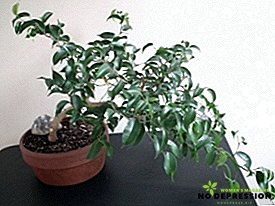
- protect from drafts;
- provide heat to the root system;
- make nutrients;
- humidify the air and perform hygienic procedures;
- to prevent diseases and pests.
In the winter months you need to protect the ficus from transplanting, pruning and formation, and you should not try to propagate it.
Disease and pest control
In order for the flower to be healthy and beautiful, you should constantly inspect your pets for signs of fungal diseases and pest infestation, and if problems are identified, take appropriate measures to eliminate them promptly.
| MAJOR DISEASES | |||
|---|---|---|---|
| Title | Sign of | Cause | Control measures |
| Mealy dew
| Manifested in the form of mealy whitish plaque | Non-compliance of temperature and humidity in the room | Removal of affected leaves and treatment of plants with systemic fungicide |
| Anthracosis
| The presence of dark spots affecting the leaves and stems | Signs of disease should be immediately removed and sprayed with a solution of fungicide. | |
| Root rot
| Drying of the tips of the leaves, withering stalks and the formation of brownish spots on the plant | Low temperature and stagnant water in the pan | Removal of decayed roots, treatment of sections with a fungicide in the process of complete replacement of the soil in the pot |
| HAZARDOUS PESTS | |||
| Spider mite
| The appearance of marble spots on the leaves. As a result, drying and twisting of the sheet plate | High temperatures and low humidity. Poor soil or infected plant
| Organize the optimum humidity and treat with soapy water |
| Mealy worms
| Blackened leaves, which subsequently fall | Biological control and insecticide pollination | |
| Shchitovka
| The presence of red spots on the inside of the leaf and the stem of the plant | Mechanical removal of parasites and processing with thick soap solution | |
Fighting diseases and pests involves not only carrying out agrotechnical, chemical and biological measures, but also competently organized care. And compliance with sanitary standards will reduce the risk of occurrence and development of parasites.
Growing problems
Ficus Benjamin is characterized by an average degree of difficulty in growing among indoor plants, and therefore needs to be paid attention to his whims.
The problems that often arise when growing ficus:
- The reason for the appearance of dry tips of leaves in winter may be insufficient humidity, which is associated with the inclusion of heating devices. To remedy the situation, you need to increase the number of sprays and organize artificial lighting. These activities will help the ficus calmly and without loss to wait for spring;
- Sharp changes in living conditions, such as a decrease in temperature, the appearance of drafts, a change of location, can lead to a drop in foliage. So still the ficus reacts to the lack of humidity and to watering with the use of cold water;
- Yellowing of the leaves and their fall indicates a surplus of water and low air temperature in the room;
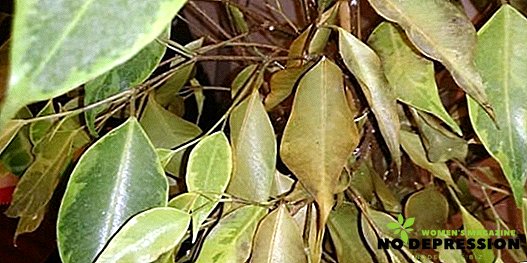
- Wrong pot size leads to stunted flower growth. If a large capacity, the root system will stop developing and die. Too tight pot prevents the development and formation of the crown;
- The appearance of light brown spots on the foliage indicates an elevated temperature, low humidity or overdose of fertilizers.
Caring for Benjamin Ficus is simple, the main thing is to monitor the condition of the flower and create comfortable conditions for it in a timely manner. In exchange for care and attention, the luxurious tree will please with lush foliage and will give the interior a sophisticated look, and will also respond with positive energy, which will save the house from any adversity.
Additional information on the care of Benjamin Ficus can be found in the following video.









